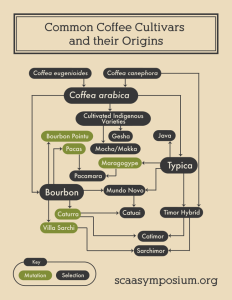
COFFEE BIOLOGY AND PROCESSING
WHAT IS COFFEE?
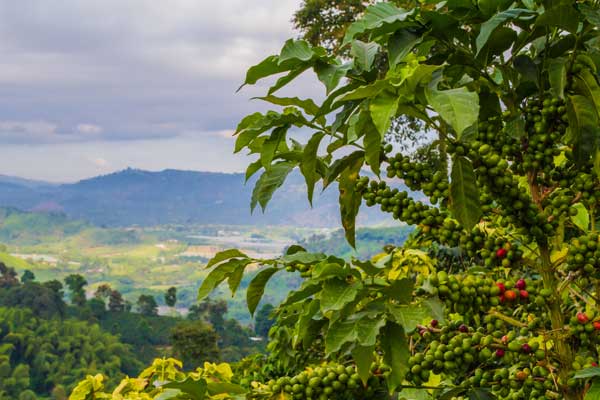
ARABICA VS. ROBUSTA
The two species of coffee plants
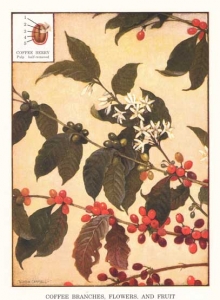 Indigo Coffee offers the highest grades of Arabica coffees. Arabica coffees are grown at high altitudes (4,000 – 6,000 feet above sea level), require very careful cultivation and just the right climate conditions. Arabica trees produce about half the amount of coffee with half the caffeine of Robusta beans. Caffeine is produced by coffee plants as a natural insecticide. Because Arabica plants are grown at higher altitudes with fewer pests, they don’t need to produce as much caffeine as Robusta. Caffeine also helps to prevent weed growth and helps to attract bees for pollination. The quality and flavor of Arabicas are far superior to Robusta coffees, and Arabicas command higher prices because of their quality, limited availability and difficulty to cultivate.
Indigo Coffee offers the highest grades of Arabica coffees. Arabica coffees are grown at high altitudes (4,000 – 6,000 feet above sea level), require very careful cultivation and just the right climate conditions. Arabica trees produce about half the amount of coffee with half the caffeine of Robusta beans. Caffeine is produced by coffee plants as a natural insecticide. Because Arabica plants are grown at higher altitudes with fewer pests, they don’t need to produce as much caffeine as Robusta. Caffeine also helps to prevent weed growth and helps to attract bees for pollination. The quality and flavor of Arabicas are far superior to Robusta coffees, and Arabicas command higher prices because of their quality, limited availability and difficulty to cultivate.
Robusta is found mostly in commercial, institutional and food service applications. The trees bear more coffee cherries than Arabica trees, are grown at lower altitudes and are easier to cultivate, as they are hardier and more resistant to diseases.
HOW IS ARABICA COFFEE CULTIVATED AND PROCESSED?
The ripe coffee cherries are usually picked from the trees by hand. The cherries take about 9 months to ripen after the coffee tree flowers and do not ripen at the same time, so each tree must be picked up to 5 times per harvest. Each mature tree yields between 1 and 1-1/2 pounds of coffee a year.
The cherries are then processed in one of several methods: washed, semi-washed or natural. How a coffee is processed greatly affects its taste profile.
In the washed process, the pulp of the cherries is removed mechanically. The beans are then allowed to ferment in order to loosen and remove the remaining pulp. Next, the beans are thoroughly washed, drained and dried in the sun or in mechanical dryers. Hulling machines remove the remaining parchment surrounding the bean. This process produces a clean, classic coffee profile.
In the semi-washed process, also referred to as honey-process or pulp natural, the skin of the ripe coffee cherry is removed. The beans are then allowed to dry on patios in their mucilage. Much care is taken to rotate and monitor the beans until completely dry. Hulling machines then remove the dried mucilage and parchment surrounding the bean. This process enhances fruit notes and produces a creamier mouth feel.
In the natural process, the cherries are spread out for up to 2 weeks to dry in the sun. Several times a day, the beans are turned by raking. Hulling machines then remove the dried pulp and parchment surrounding the bean. This process results in a full-bodied, sweet and fruity taste profile.
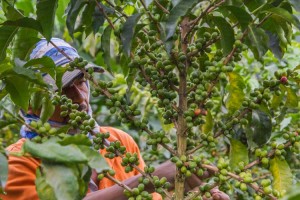
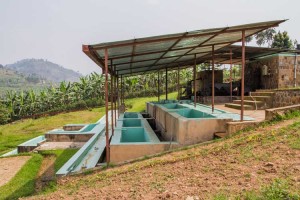
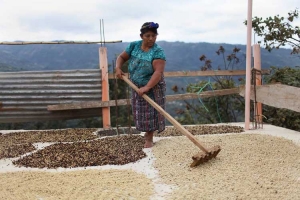
HOW IS COFFEE GRADED?

WHAT DO THE COFFEE NAMES MEAN?
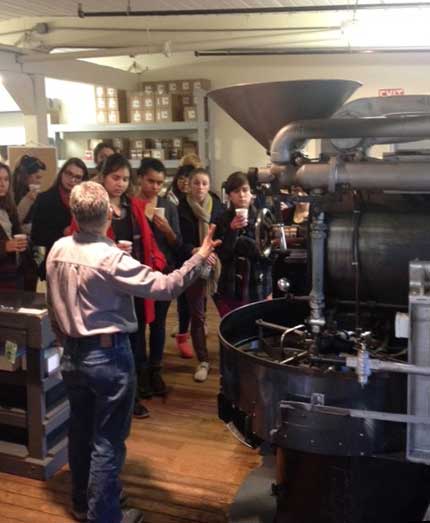
WHAT ARE SINGLE ORIGINS?
Single-origin coffees are unblended coffees grown in a particular geographic region. Many people also use the word varietals to refer to single-origin coffees. While varietal technically refers to botanical varieties of the arabica coffee plant (such as typica and bourbon), in common usage, it has come to be synonymous with single origin. Single-origin coffees encompass perennial favorites such as Colombian Supremo and lesser known but equally outstanding coffees from around the world. Some of our single-origins are ‘estate’ coffees, that is, grown on a single farm. The ‘estate’ is often featured in the name (eg: Costa Rican Tarrazu La Minita).

